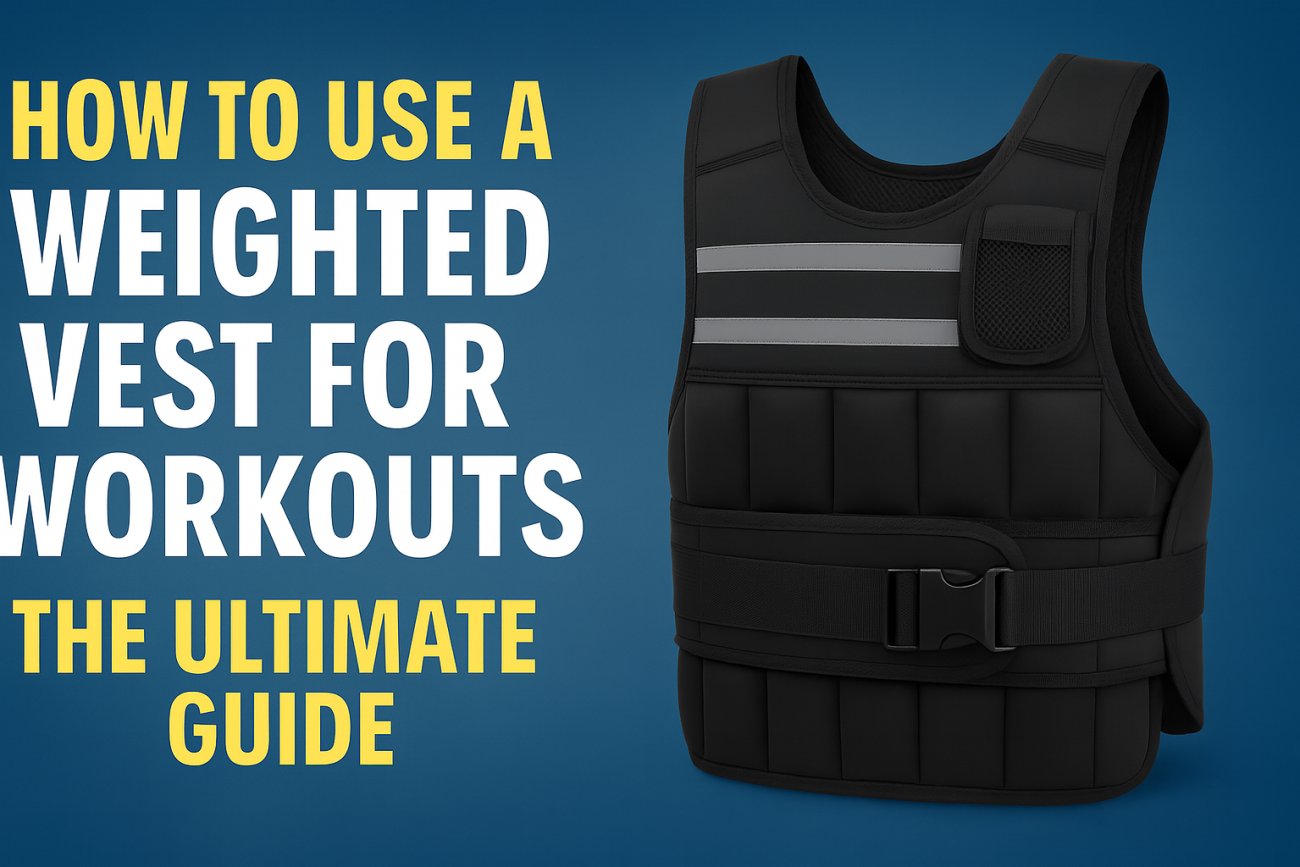Looking to take your fitness routine to the next level? One of the most versatile and effective tools you can add to your arsenal is the weighted vest. Whether you’re a beginner seeking to boost general fitness or an experienced athlete wanting to increase your training intensity, a weighted vest can make a significant difference. In this guide, you’ll learn how to use a weighted vest for workouts, including benefits, safety tips, and a variety of exercises to help you get the most out of your training sessions.
What Is a Weighted Vest?
A weighted vest is a specially designed vest that holds evenly distributed weights, allowing you to add extra resistance to bodyweight and cardio exercises. This added weight increases the intensity of your workouts, making your muscles work harder and your cardiovascular system more engaged.
Benefits of Using a Weighted Vest
- Increased Strength: The added resistance helps build muscle and strength more effectively.
- Improved Cardiovascular Fitness: Your heart and lungs will be challenged to pump more oxygen-rich blood.
- Boosted Calorie Burn: More effort means more energy expenditure, helping with fat loss.
- Enhanced Endurance: Training with added weight makes regular workouts feel easier and improves stamina.
- Bone Health: The extra load stimulates bone growth, reducing the risk of osteoporosis.
Choosing the Right Weighted Vest
Not all weighted vests are created equal. Consider these factors before making a purchase:
- Adjustability: Look for vests that allow you to add or remove weights to customize intensity.
- Fit and Comfort: A snug, ergonomic design is essential to prevent shifting and discomfort during exercise.
- Weight Range: Beginners should start with 5-10% of their body weight, while advanced users can progress to 20% or more.
- Material: Breathable, sweat-resistant fabrics improve comfort and hygiene.
Safety Tips When Using a Weighted Vest
1. Start Light
Always begin with a lower weight, especially if you’re new to resistance training. A sudden increase in load can strain your joints, muscles, and connective tissues.
2. Focus on Form
Adding weight increases stress on your body. Maintain proper exercise form to reduce injury risk.
3. Gradually Increase Weight
Incrementally add weight as your strength and conditioning improve. Jumping to heavy weights too soon can lead to overuse injuries.
4. Listen to Your Body
Stop immediately if you experience pain or discomfort. Rest and consult a professional if issues persist.
5. Warm Up and Cool Down
The extra load makes it critical to prepare your body before and after workouts.
How to Use a Weighted Vest for Different Workouts
The true power of a weighted vest lies in its versatility. Here’s how you can incorporate it into different training styles:
Bodyweight Exercises
- Push-Ups: Add resistance to your upper body and core as you perform classic push-ups.
- Pull-Ups: Increase upper body challenge and grip strength.
- Squats & Lunges: Intensify lower body routines and improve balance and core activation.
- Planks: Turn a regular plank into a formidable core-strengthening move with added weight.
Cardio Workouts
- Running or Jogging: Enhance endurance and calorie burn. Start with walking before moving to higher-impact running.
- Stair Climbing: Simulate hill training and increase leg strength.
- Jumping Jacks & Burpees: Boost cardiovascular intensity and full-body conditioning.
High-Intensity Interval Training (HIIT)
Adding a weighted vest to HIIT routines makes each round more challenging and effective for both strength and fat loss.
- Sprints
- Mountain Climbers
- Box Jumps
Sample Weighted Vest Workout Routine
Here’s a beginner-friendly, full-body routine you can try:
- 5-Minute Warm-Up (dynamic stretches and light cardio)
- Push-Ups: 3 sets of 10-15 reps
- Squats: 3 sets of 15-20 reps
- Pull-Ups: 3 sets of 5-10 reps
- Walking Lunges: 3 sets of 20 steps
- 1-Minute Plank: 3 sets
- 5-Minute Cool Down (walking and static stretches)
Adjust the number of sets, reps, and rest periods based on your fitness level and goals.
Frequently Asked Questions About Weighted Vest Training
Is a Weighted Vest Good for Weight Loss?
Yes! Wearing a weighted vest increases the intensity of your workouts, helping you burn more calories and potentially lose weight faster.
Can Beginners Use a Weighted Vest?
Absolutely. Start with a light vest and focus on proper exercise form. Over time, you can gradually increase the load.
How Heavy Should My Weighted Vest Be?
For most people, starting with 5-10% of your body weight is safe. Advanced users can use up to 20%. Always prioritize safety and comfort.
Can I Use a Weighted Vest Every Day?
It’s best to cycle vest use with regular workouts to give your body recovery time and prevent overuse injuries. Two to three times a week is a good starting point.
Final Tips for Success
- Track your progress and adjust weight as you improve.
- Stay hydrated and fuel your body with proper nutrition.
- Pair weighted vest training with a well-rounded fitness program for optimal results.
- Consult a fitness professional if you have any underlying health concerns.
Integrating a weighted vest into your fitness routine is a powerful way to challenge yourself and accelerate your results. By following these tips and techniques, you’ll maximize benefits while staying safe and motivated on your fitness journey.
